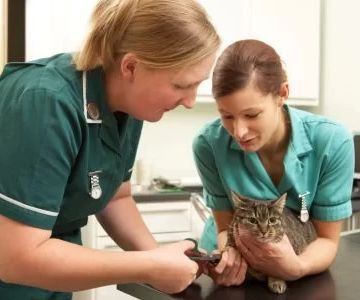- 1. Understanding Veterinary Malpractice
- 2. Grounds for Suing a Veterinarian
- 3. How to Determine If Your Veterinarian Was Negligent
- 4. Legal Options if You Want to Sue a Vet
- 5. Case Studies and Examples of Veterinary Malpractice
- 6. How to Prevent Veterinary Malpractice Issues in the Future
1. Understanding Veterinary Malpractice
When it comes to our pets, we trust veterinarians to provide the best care possible. But what happens if something goes wrong, and your pet suffers harm due to the actions—or inactions—of a veterinarian? In these cases, you may be wondering: "Can you sue a veterinarian for malpractice?" The answer is yes, but there are specific requirements and conditions that must be met before a malpractice case can be filed against a veterinarian.
Veterinary malpractice occurs when a veterinarian fails to provide the standard of care that is expected in the field, resulting in harm or injury to an animal. Similar to medical malpractice for human healthcare providers, veterinarians have a duty of care to their patients. If they fail in this duty and cause harm, they can be held legally accountable. However, malpractice cases in veterinary medicine can be complex and require proving negligence, which is why it’s essential to understand the nuances of veterinary malpractice law before taking legal action.
2. Grounds for Suing a Veterinarian
To sue a veterinarian for malpractice, you must have specific grounds based on the failure to meet the standard of care expected in the veterinary field. Here are common grounds for veterinary malpractice claims:
- Negligence: This is the most common reason for suing a veterinarian. Negligence occurs when the veterinarian fails to perform their duties in a manner that meets the standard of care required for the situation. This could include improper diagnosis, failure to treat a condition, or administering the wrong medication.
- Failure to Diagnose: If a veterinarian fails to diagnose a condition that should have been diagnosed, leading to further harm or injury, you may have grounds for a malpractice claim. For example, if a pet has a treatable illness that is missed or misdiagnosed, and it worsens due to a delay in treatment, the veterinarian may be held responsible.
- Medication Errors: Administering the wrong medication or dosage is a serious mistake that can harm your pet. If a veterinarian prescribes the wrong medication, fails to read medical history properly, or provides incorrect instructions, you might have a case for malpractice.
- Improper Treatment or Surgery: If a veterinarian performs a surgery or medical treatment incorrectly or fails to follow proper protocols, and it results in harm to the pet, they can be sued for malpractice. For instance, if a surgical procedure is carried out negligently and the pet suffers complications, there could be grounds for a lawsuit.
- Failure to Obtain Informed Consent: Before performing medical procedures, veterinarians are required to inform pet owners about the risks involved. If this consent is not obtained and the procedure leads to harm, this could be another basis for malpractice.
To successfully sue a veterinarian for malpractice, you’ll need to establish that their actions or negligence directly led to the harm of your pet. This usually requires expert testimony from another veterinarian in the field.
3. How to Determine If Your Veterinarian Was Negligent
Determining negligence in veterinary malpractice cases can be challenging, as it often requires expert knowledge and evidence. Here are the key elements needed to determine if veterinary negligence occurred:
- Standard of Care: The first step in proving negligence is establishing what the standard of care is for the situation. This can vary depending on the area of veterinary practice (e.g., surgery, general care, emergency care). Expert witnesses, often other veterinarians, are crucial in defining what a reasonable veterinarian would have done in the same situation.
- Breaching the Standard of Care: Once the standard of care is established, the next step is proving that the veterinarian’s actions (or lack of action) breached that standard. This could be through improper diagnosis, incorrect treatment, or other failures to act in accordance with established practices.
- Direct Causation: You must show that the veterinarian’s negligence directly caused harm to your pet. If your pet’s injury or illness was due to factors outside of the veterinarian’s control, such as an underlying condition that could not have been diagnosed, the case may not be considered malpractice.
- Damages: Finally, you must show that your pet’s injury or death resulted in damages, either through medical expenses, emotional distress, or other costs associated with the injury. This can be difficult to quantify, but it’s a necessary step in pursuing a malpractice lawsuit.
If you believe that veterinary negligence is the cause of your pet’s injury, consult with a legal professional who specializes in veterinary malpractice. They can help assess whether you have a case and guide you through the legal process.
4. Legal Options if You Want to Sue a Vet
If you decide to pursue legal action against a veterinarian for malpractice, there are several options available. The most common paths include:
- Small Claims Court: If the damages are relatively minor (usually below a certain monetary threshold, depending on your state), you may be able to file a claim in small claims court. This is a simpler, faster process but is typically limited to smaller amounts of compensation.
- Civil Court: For more significant claims, especially those involving serious injury or death of your pet, you’ll need to file a lawsuit in civil court. This will involve more complex legal proceedings and likely require expert testimony to establish negligence.
- Settlements and Mediation: In many cases, veterinary malpractice claims are settled out of court. This involves negotiating a settlement amount with the veterinary practice’s insurance company. Mediation can also be a way to resolve the issue without going to trial, although this depends on the circumstances of the case.
Before pursuing a lawsuit, it’s important to consult with an attorney who specializes in malpractice cases to determine your best course of action.
5. Case Studies and Examples of Veterinary Malpractice
To understand the potential outcomes of a veterinary malpractice case, let’s take a look at some examples:
- Case 1: A dog owner took their pet to the vet for a routine dental cleaning. The veterinarian failed to notice a significant dental abscess, which later caused a severe infection. The owner sued for negligence, arguing that the vet’s failure to diagnose the condition led to unnecessary suffering for the dog and extensive medical treatment costs. The court found in favor of the pet owner, awarding compensation for medical expenses and pain and suffering.
- Case 2: A cat’s leg was injured after an accident, and the owner took it to a veterinary clinic for treatment. The veterinarian performed surgery but failed to properly set the leg, resulting in permanent disability. The owner sued the vet for malpractice, arguing that the failure to properly treat the injury was negligent. The case was settled out of court with the vet’s insurance company covering the costs.
These cases show that veterinary malpractice can take many forms, and pursuing legal action is sometimes the only way to hold a veterinarian accountable for their negligence. However, it’s crucial to have strong evidence and expert testimony to back your case.
6. How to Prevent Veterinary Malpractice Issues in the Future
While no one wants to imagine that their veterinarian could make a mistake, there are steps you can take to minimize the risk of veterinary malpractice:
- Research Veterinarians: Always choose a veterinarian with good reviews, credentials, and experience. Don’t hesitate to ask about their qualifications and approach to animal care.
- Stay Informed: Be proactive about understanding your pet’s medical needs. The more informed you are about your pet’s health, the better equipped you’ll be to recognize when something is wrong.
- Keep Records: Always keep records of your pet’s veterinary visits, treatments, and medications. These records can be invaluable in case of a dispute or malpractice claim.
By taking these steps, you can ensure that you are doing everything possible to prevent malpractice and ensure that your pet receives the best care possible.











